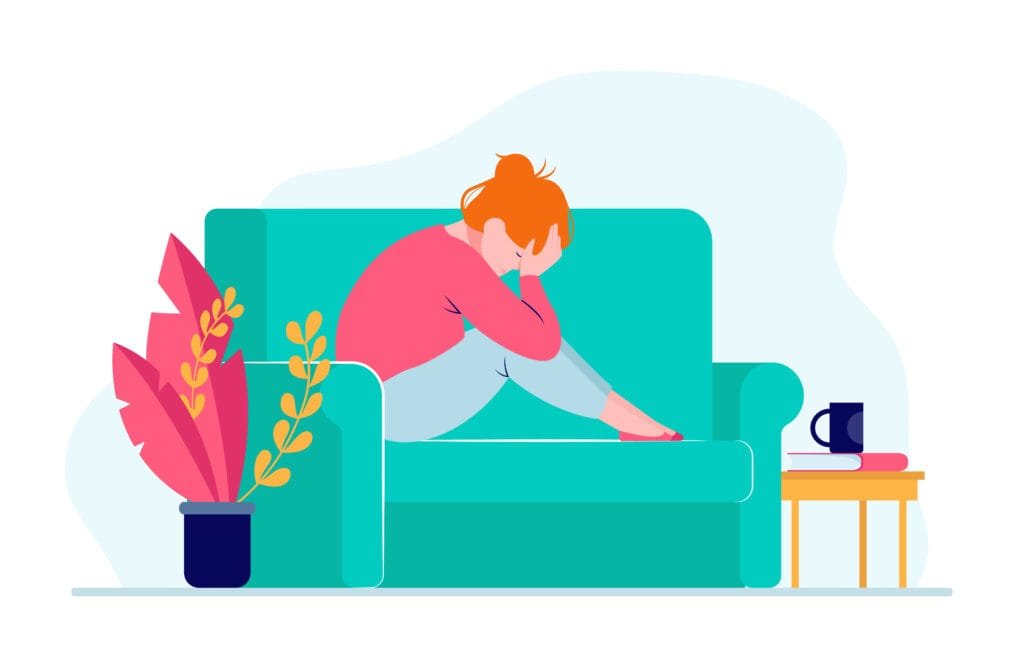Depression is a complex and pervasive mental health disorder that affects millions of people worldwide. It is characterized by persistent feelings of sadness, emptiness, and a loss of interest in activities that were once pleasurable. This blog aims to provide a comprehensive overview of depression, including its causes, symptoms, risk factors, and treatment options. By delving into the various aspects of depression, we can foster a deeper understanding of this condition and promote empathy and support for those who are affected.
Definition and Types
Depression, also referred to as major depressive disorder, is a mental health condition that negatively impacts an individual’s thoughts, emotions, and overall well-being. It is important to note that depression is not simply a temporary feeling of sadness, but a persistent and chronic state that can interfere with daily functioning. Some of the major types of are:-
- Major Depressive Disorder (MDD): This is the most common form of depression, characterized by a prolonged period of sadness, hopelessness, and loss of interest in activities. MDD often affects a person’s ability to work, study, sleep, eat, and enjoy life.
- Persistent Depressive Disorder (PDD): Previously known as dysthymia, PDD is a milder, but long-lasting form of depression. Individuals with PDD experience depressive symptoms for at least two years, which can significantly impair their daily functioning.
- Postpartum Depression (PPD): PPD affects new mothers following childbirth, characterized by intense feelings of sadness, anxiety, and exhaustion. It can hinder the bonding process with the baby and negatively impact the mother’s ability to care for herself and her child.

Causes and Risk Factors
Depression is a multifactorial condition with various causes and risk factors. While the exact etiology remains unclear, the following factors may contribute to the development of depression:
- Biological Factors: Genetic predisposition, neurotransmitter imbalances, hormonal changes, and brain structural abnormalities can increase vulnerability to depression.
- Environmental Factors: Stressful life events like trauma, loss, relationship difficulties, financial problems, or work stress can trigger or worsen depression.
- Psychological Factors: Personal traits like low self-esteem, negative thinking, perfectionism, or a history of childhood abuse may contribute to depression.
- Medical Conditions: Certain medical conditions such as chronic pain, cancer, diabetes, cardiovascular diseases, and hormonal disorders can increase the risk of developing depression.
Symptoms and Diagnostic Criteria
Recognizing the symptoms is crucial for early identification and intervention. The Diagnostic and Statistical Manual of Mental Disorders (DSM-5) outlines the following criteria for diagnosing depression:
- Depressed mood most of the day, nearly every day.
- Diminished interest or pleasure in almost all activities.
- Significant weight loss or gain, or changes in appetite.
- Insomnia or hypersomnia (excessive sleepiness) nearly every day.
- Fatigue or loss of energy.
- Feelings of worthlessness or excessive guilt.
- Difficulty concentrating or making decisions.
- Recurrent thoughts of death or suicidal ideation.
Treatment Options
Depression is a treatable condition, and various approaches can help individuals manage and overcome it. Treatment plans are tailored to the individual’s needs and may involve the following components:
- Psychotherapy: Talk therapy, such as cognitive-behavioral therapy (CBT) and interpersonal therapy (IPT), aims to identify and modify negative thinking patterns, develop coping strategies, and improve interpersonal relationships.
- Medication: Healthcare professionals may prescribe antidepressant medications, such as selective serotonin reuptake inhibitors (SSRIs), serotonin-norepinephrine reuptake inhibitors (SNRIs), or tricyclic antidepressants (TCAs), to help alleviate depressive symptoms.
- Lifestyle Changes: Engaging in regular exercise, maintaining a healthy diet, and getting enough sleep can positively impact one’s mood and overall well-being. Additionally, avoiding substance abuse and participating in pleasurable activities also contribute to improved mental health.
- Support Network: Building a strong support system of family, friends, or support groups provides emotional support and understanding during recovery.
- Alternative Therapies: In considering adjunctive treatments, individuals may consider complementary approaches such as mindfulness meditation, yoga, acupuncture, or herbal supplements. However, it is important to note that their efficacy varies, and professional guidance is advised.
Depression is a prevalent mental health condition that significantly impacts individuals, their families, and society as a whole. Understanding the causes, symptoms, and treatments of depression helps reduce stigma and encourage early intervention. Fostering a compassionate and empathetic environment is vital to promoting mental health awareness and providing resources for those affected by depression. Together, we can work towards a society that supports and uplifts individuals struggling with depression, fostering hope, and enabling recovery.

